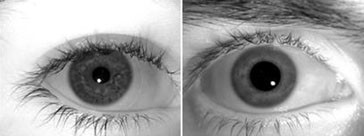
Casia Iris Image Database
1.Introduction
With fast development of iris image acquisition technology, iris recognition is expected to become a fundamental component of modern society, with wide application areas in national ID card, banking, e-commerce, welfare distribution, biometric passport, and forensics, etc. How to get winzip for free 2019. Since 1990s, research on iris image processing and analysis has achieved great progress.
However, performance of iris recognition systems in unconstrained environments is still far from perfect. Iris localization, nonlinear normalization, occlusion segmentation, liveness detection, large-scale identification and many other research issues all need further investigation. The success of investigations into such issues often depends on the availability of carefully designed iris image databases of sufficient size. Such publicly available datasets are however very limited. Therefore we are pleased to release to the public domain CASIA Iris Image Database V3.0 (or CASIA-IrisV3 for short) in order to further promote research and progress on iris recognition.
Manual on scour at bridges and other hydraulic structures, second edition (C742) Structures built in or near rivers and other channels can be vulnerable to scour around their foundations. If the depth of scour becomes significant, the stability of the foundations may be endangered, with a consequent risk to the structure of damage or failure. Ciria manual scour bridges.

CASIA Iris Image Database Version 1.0 (CASIA-IrisV1) includes 756 iris images from 108 eyes. For each eye, 7 images are captured in two sessions whose. CASIA-IrisV3 includes three subsets which are labeled as CASIA-Iris-Interval, CASIA-Iris-Lamp, CASIA-Iris-Twins. CASIA-IrisV3 contains a total of 22,035 iris images from more than 700 subjects. All iris images are 8 bit gray-level JPEG files, collected under near infrared illumination.